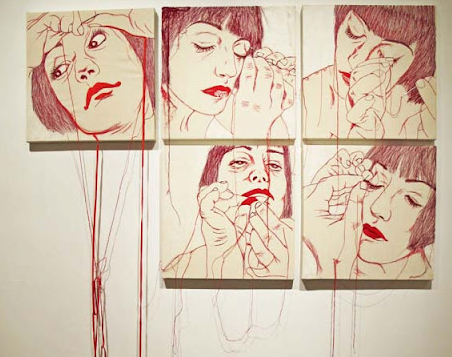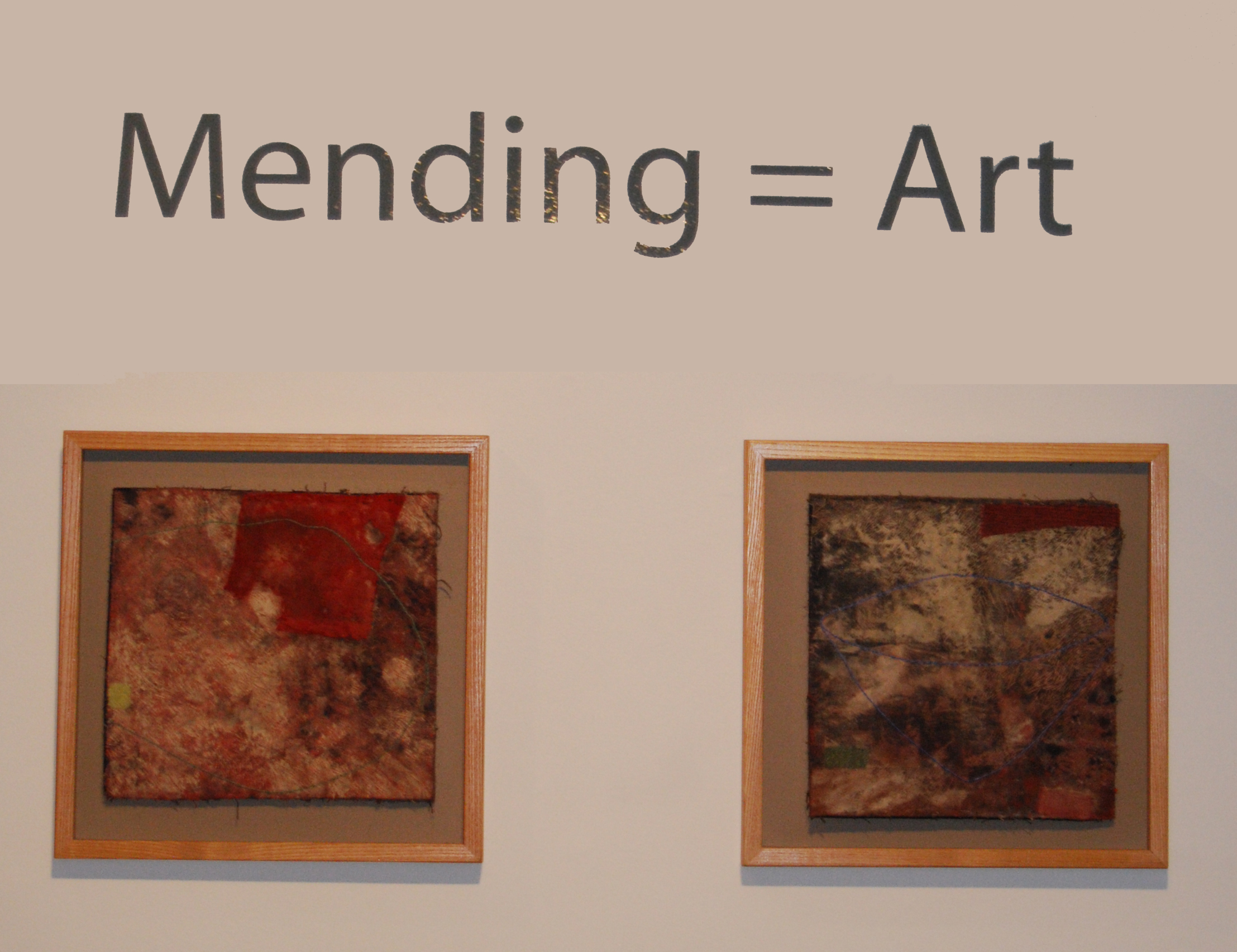Years ago, I saw this at a Dorthy Caldwell exhibit. She included this patched child's dress, in the exhibit of her art, as an example of the beauty of mending.
see more athttp://www.dorothycaldwell.com/
Dorothy Caldwell uses mending techniques as a written language, a stitched dialect. Looking back on this now, as I write, I want to abandon my tablet series and go back to exploring that language, to write again in that darning vernacular.....














